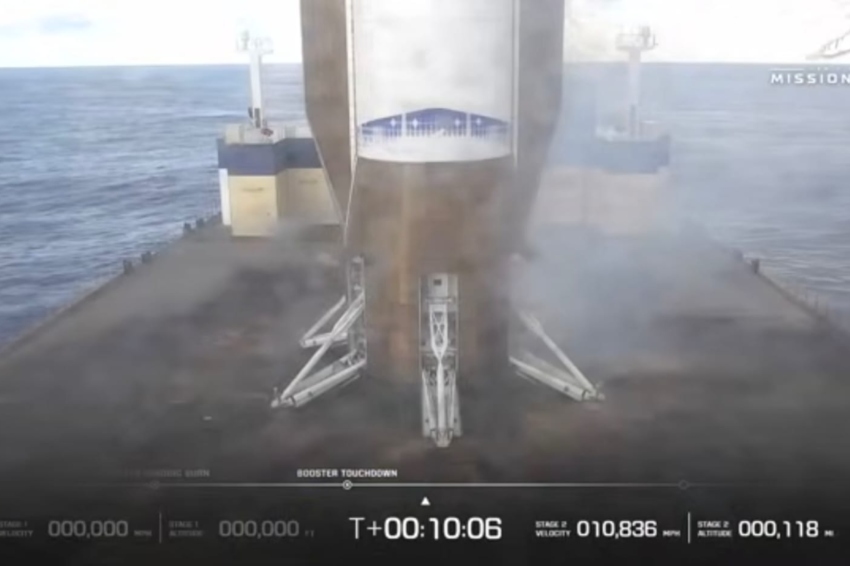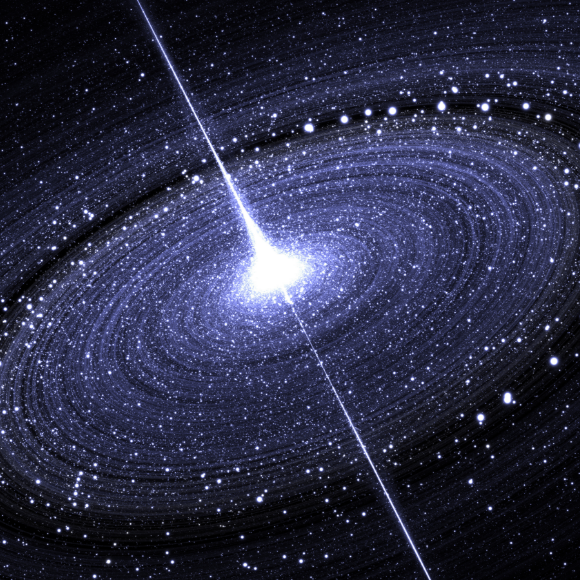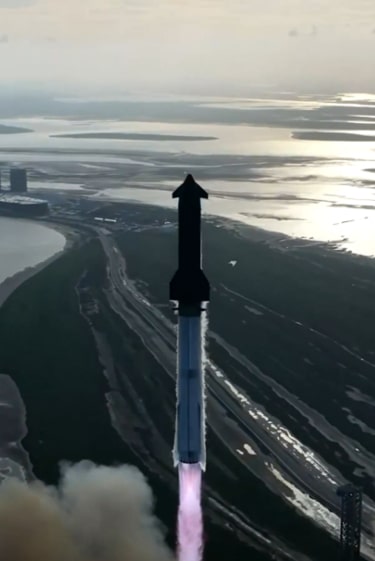A Twin Mission to Study Mars: ESCAPADE Takes Flight
The United States has launched two satellites to study the atmosphere of our neighboring planet, in the first operational launch of Blue Origin’s New Glenn rocket — a mission that concluded with a successful landing of its first stage on a sea platform.
After several delays over the past week due to weather conditions and intense solar storms, one of the most intriguing space missions in recent years has finally begun its journey — the first to carry twin satellites dedicated to studying Mars. Led by NASA, the mission also underscores the growing collaboration between the public sector and private companies in the space industry.
Atmospheric Trends
The two satellites make up the ESCAPADE mission — a somewhat contrived acronym for Escape and Plasma Acceleration and Dynamics Explorers. They are designed to study the upper atmosphere of our neighboring planet, focusing primarily on how it interacts with the solar wind — the stream of charged particles emitted by the Sun.
Researchers hope the mission’s data will shed light on what happened to Mars’s atmosphere, which billions of years ago was thick and dense enough to sustain liquid water on the surface, complete with rainfall cycles and clouds. At some point, most of it evaporated into space, and today its density is only about 1.5 percent that of Earth’s atmosphere. Another key objective of the mission is applied research to support future crewed missions to Mars by providing tools to forecast the effects of solar storms, enabling astronauts on the Martian surface to prepare for sharp increases in radiation levels and protect themselves accordingly.
The satellites were built by the American company Rocket Lab for the University of California, Berkeley, which is leading the scientific mission. In the past, spacecraft of this type were typically developed and assembled within NASA — for example, at the Jet Propulsion Laboratory (JPL) — even if some components were sourced externally. In this project, however, Rocket Lab handled the entire development and assembly to meet academic specifications, while UC Berkeley’s space lab will operate the satellites from a dedicated control room.
Each of the two satellites — named Blue and Gold after UC Berkeley’s colors — is roughly the size of a small refrigerator (1.65 m × 1.20 m × 1.09 m) and has a launch mass of 535 kilograms, about two-thirds of which is fuel. Once in space, each will deploy two solar panels for power generation, giving them a wingspan of nearly five meters. Their instruments include a magnetometer for measuring magnetic fields, a sensor for detecting electric charges, and sensors for measuring ion and plasma flows.
Around Mars, the satellites will follow highly elliptical orbits ranging from 160 kilometers above the surface to 8,500 kilometers at their farthest point. After six months, one will shift slightly closer to the planet and the other slightly farther away. Comparing measurements from the two orbits will allow researchers to track atmospheric changes and identify their trends.
UC Berkeley’s video about the Escapade mission:
A New Rocket and a Long Route
The two satellites were launched aboard Blue Origin’s new rocket, New Glenn, in its first operational flight. The rocket’s maiden launch, in early 2025, was successful, although the company failed in its attempt to land the first stage on a sea platform — something SpaceX achieves on most of its launches. New Glenn is one of the most powerful launch vehicles on the market, with capabilities similar to SpaceX’s Falcon Heavy, ULA’s Vulcan Centaur, and Europe’s Ariane 6. It can carry 45 tons to low-Earth orbit or seven tons to the Moon. In this launch from Cape Canaveral, Florida, however, it carried just over one ton. After several holds in the countdown, the launch proceeded smoothly: three minutes after liftoff, the second stage — carrying the satellites — separated from the first stage and continued toward Earth orbit. The first stage then fell back through the atmosphere, stabilized itself using its engines as planned, and completed a soft landing on the drone ship Jacqueline in the Atlantic Ocean. The combined success of the Mars-bound launch and the first-stage recovery positions Blue Origin as a serious contender in the heavy-lift launch market.
About 33 minutes after launch, at an altitude of roughly 1,200 kilometers, the satellites separated successfully from the launch vehicle in sequence, beginning the long, independent journey that will eventually bring them into orbit around Mars.

The first stage of New Glenn moments after touching down on the drone ship. Screenshot from Blue Origin’s broadcast.
Spacecraft bound for Mars are usually launched during “launch windows,” when the positions of Earth and Mars in their orbits allow for a relatively short journey, usually between seven and eleven months. Such a window opens roughly every 26 months. In principle, spacecraft can be sent to Mars at other times, but if Earth and the Red Planet are on opposite sides of the Sun, the journey becomes far longer and more demanding. This launch took place outside the normal window, following numerous delays that prevented NASA from launching the Mars satellites on New Glenn’s maiden flight as originally planned.
For that reason, their trajectory is different: the spacecraft will first travel to the Lagrange point L2, one of the locations where the gravitational forces of Earth and the Moon balance out, allowing them to maintain position with very little fuel. About a year from now, as the next launch window approaches, they will fire their engines and enter a transfer trajectory that will carry them to Mars in September 2027, where they are expected to operate in orbit for about two years.

First operational launch of Blue Origin’s new heavy-lift rocket, previously tested only once. The New Glenn rocket on its launch pad at Cape Canaveral, Florida | Photo: Blue Origin
This route carries more risks than a direct flight to Mars: it requires more fuel, and the spacecraft will be exposed to radiation for a longer period. On the other hand, NASA and Blue Origin hope that using this path will also serve as a proof of concept for future crewed missions to Mars. Such missions will require the launch of dozens or even hundreds of rockets, carrying equipment that will arrive separately from the astronauts. Launching all this cargo within the few weeks of a standard Mars launch window may be extremely challenging, and a trajectory with an intermediate “parking stop” could offer a solution by allowing certain payloads to be launched months before the window opens.
If they reach Mars as planned, the two satellites will join the seven spacecraft currently orbiting the planet: three from the United States, two from the European Union (one in collaboration with Russia), one from China, and one from the United Arab Emirates. Some of these orbiters have been operating for more than twenty years. On the surface, NASA’s Curiosity and Perseverance rovers remain active. No other planet has been explored by humanity as extensively as Mars — but if the United States truly intends to land humans there in the coming decades, many more spacecraft will have to be launched.




